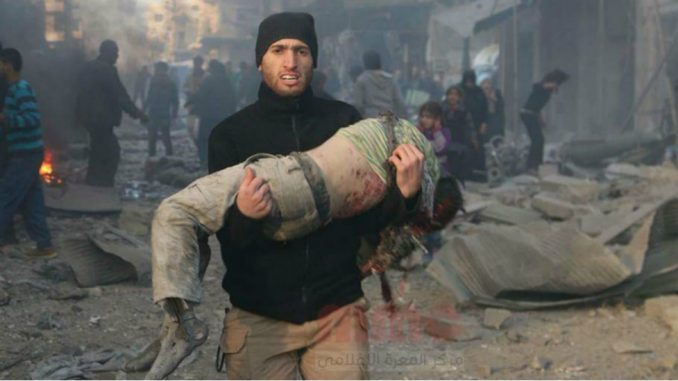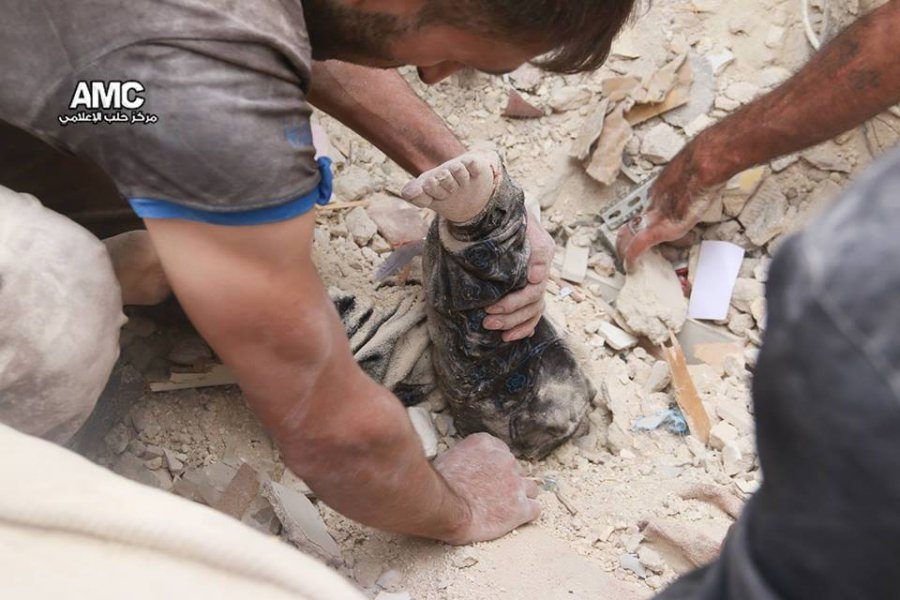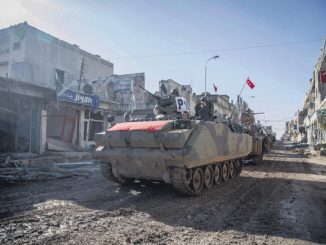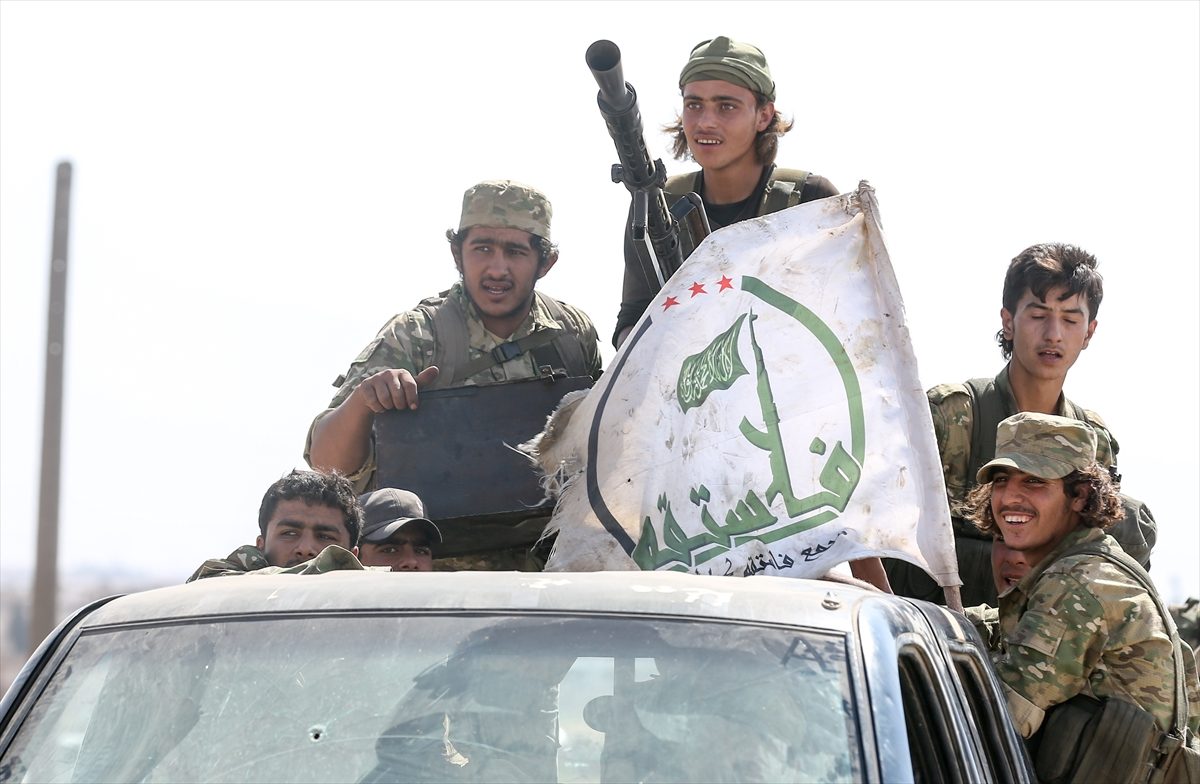
Assad regime’s warplanes carried out several air strikes against towns in rebel-held Idlib on Tuesday after a new wave a displaced people reached the province, in a series of escalations since Aleppo’s recapture, that aim at ending the rebel’s resistance and taking back their last major stronghold.
The air strikes killed at least six people and wounded 21 others in Maarat Misreen, and left several injured in nearby Binnish, just a few kilometers (miles) from Idlib city, the Syrian Observatory for Human Rights reported.
A military media outlet run by Assad regime’s ally Hezbollah said the jets had targeted the two towns in response to rebels repeatedly targeting civilians in the two neighboring Shi’ite-majority villages, al-Foua and Kefraya.
This attack in the last in a series of truce breaches and escalations since Aleppo’s recapture in December.
The Syrian Observatory for Human Rights said on February 7 that at least 26 people were killed and casualties were expected to rise as rescue workers searched for bodies under the rubble.
“Ten civilians, mostly women, are among the dead,” Rami Abdel Rahman, head of the monitoring group told AFP news agency.
The strikes also wounded scores of people and leveled several multi-storey buildings in residential areas of the northwestern city, according to witnesses, who told Reuters news agency that the extent of the damage and the debris bore the hallmarks of a Russian attack.
The Civil Defence, a volunteer rescue group operating in rebel-held areas, gave a different death toll, saying 15 bodies were pulled from the rubble and that 30 wounded people were taken for treatment.
Video footage by activists on social media showed civilians, including young children, being treated in a main city hospital where the injured had been taken for treatment.
Russian planes have targeted a number of towns and villages in the area since entering the Syrian conflict in September 2015 to back ally President Bashar al-Assad.
Most recently, At least 73 people have been killed in suspected Russian air strikes on several areas of Idlib province in December marking the highest death toll in long months of massacres.
Rebels surrender in Serghaya, moved to Idlib
A total of 250 people including 80 fighters left Serghaya on the outskirts of Damascus after long months of siege and bombardment by Assad regime and its allies.
Rebel fighters and their families marched through Serghaya on Monday toward the line of buses waiting for them at the town’s border.
Shortly afternoon, a convoy of eight of the regime’s green buses filled with 200 passengers left Serghaya, located in the a-Zabadani mountains along the Lebanese border. The buses departed for opposition-held Idlib province.
Only a handful of Serghaya’s 20,000 residents chose to leave the town, fearing regime bombardment there and miserable conditions in Idlib displacement camps.
For almost two years, regime and Hezbollah forces have blockaded Serghaya, preventing the entry of medicine and fuel while cutting off access to farmland. However, Serghaya has mostly avoided regime shelling.
The town was controlled, until Monday, by a small contingent of Free Syrian Army fighters, as well as a local council.
For the regime, the settlement means the return of Serghaya and surrounding towns on the Lebanese border to government control. For town residents, the reconciliation brings hope that regime forces will release detained residents and lift their blockade of the town.
“The most important thing,” said the opposition coordinator, as rebels boarded the buses on Monday, “is that the regime doesn’t bombard Serghaya.”
This evacuation is another chapter in Assad regime’s retrieving of the rebels’ held areas around Damascus.
Rebel groups retain a significant pocket of territory in Eastern Ghouta, an area of towns and farms east of the capital, but the enclave has been shrinking under army advances, intense bombing, and a prolonged siege.
Assad regime forces, helped by Russian air power and Iran-backed Shiite militias, has steadily ended armed opposition influence in the remaining pockets of resistance around the capital using a series of army offensives and evacuation agreements, after years of siege, starvation, and daily bombing.
Damascus describes the evacuation deals as “reconciliation” or “settlement agreements”, but rebels say they involve the forcible displacement of whole communities from opposition areas after years of siege and bombardment.
Idlib, the next aim
By the summer of 2015, President Assad seemed on the verge of being overthrown. Then Russia launched its military intervention – all the while paying lip service to a diplomatic process the US administration pursued to no avail.
The Russian intervention tilted the war in favor of Assad regime and cost the rebels many of their strongholds, making Idlib among the last important pressure point on Assad regime to accept a political solution to end the war.
The Assad regime forces, backed by Russian air power, Iranian ground forces, and Shi’ite militia fighters from Iran, Iraq, and Lebanon, has been tightening its grip on rebel-held districts of Aleppo and Idlib since the start of this year and were able in the end to retrieve Aleppo after months of fighting.
More than 40.000 civilians were displaced from Aleppo and sent to Idlib province.
In addition, thousands of rebels and their families have been displaced from various areas around Syria and brought to Idlib under “reconciliation” or “settlement agreements”, that aim at gathering them in one place to pave the way to end them all together later.
After Aleppo, Idlib will be the next aim, and Assad regime has already started to prepare for the battle with daily bombing and massacres since months. The number of deaths rose sharply in October.
Idlib province is witnessing massacres and random killing by the regime and Russian warplanes and Helicopters using missiles, barrel bombs and heavy machine guns, the heavy bombardment started on the 20th of October leading to massive raise in the dead numbers, according to the observatory.
Other than the numbers mentioned above in 2017, the SOHR documented the death of 288 civilians including 93 children and 55 women in the period between 22nd of October until the end of December 2016, by aerial bombardment by Russian and Syrian warplanes, while 1000 others were wounded and seriously wounded or permanently wounded, in addition to massive material damages.
In November, Defence Minister Sergei Shoigu said Russian forces had begun a “major operation” targeting Idlib and Homs provinces.
According to analysts, the regime is trying to gather the rebels in Idlib, making it easy to fight them all fiercely in one place under the term of fighting terrorism. The fierce campaign may take long, but analysts say it will succeed eventually as happened in Aleppo if the global powers didn’t take any real steps to stop it.



